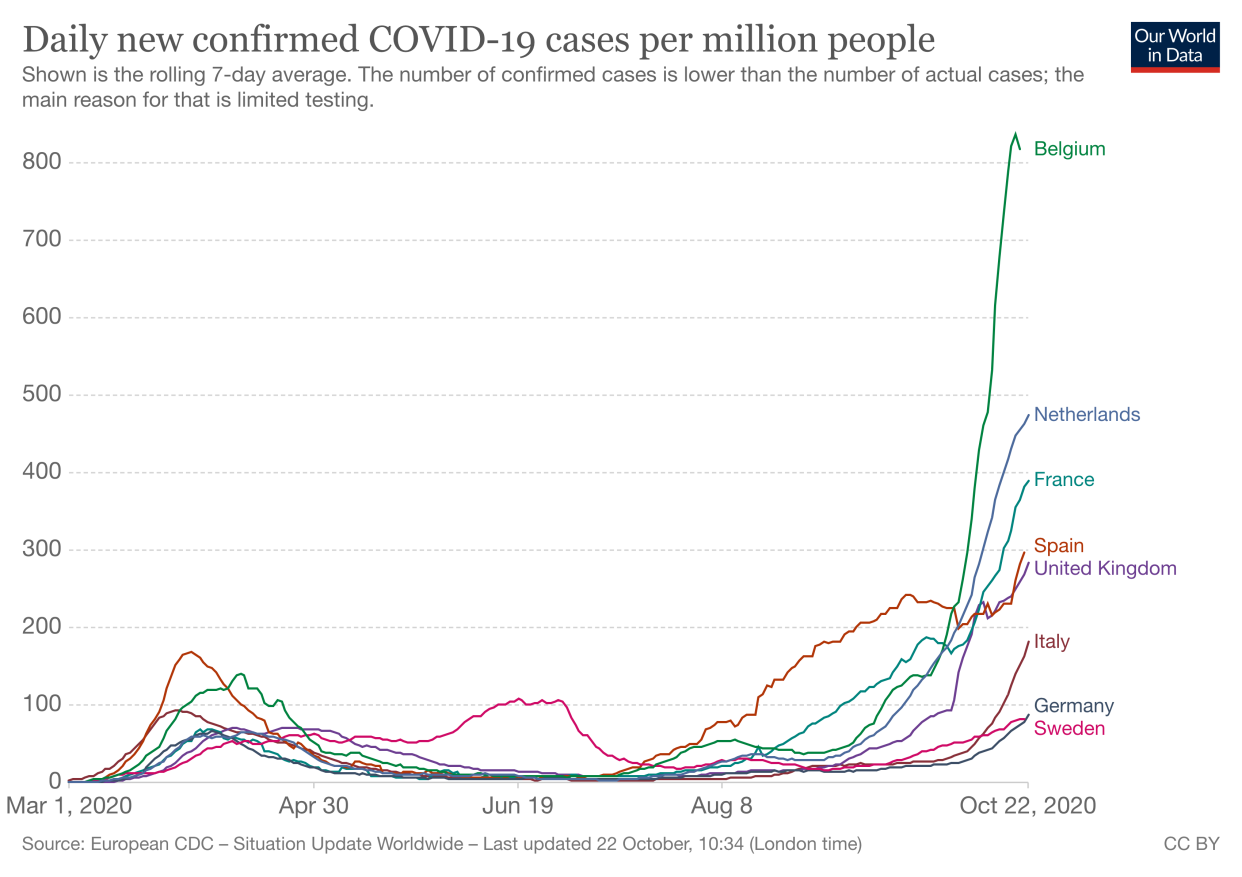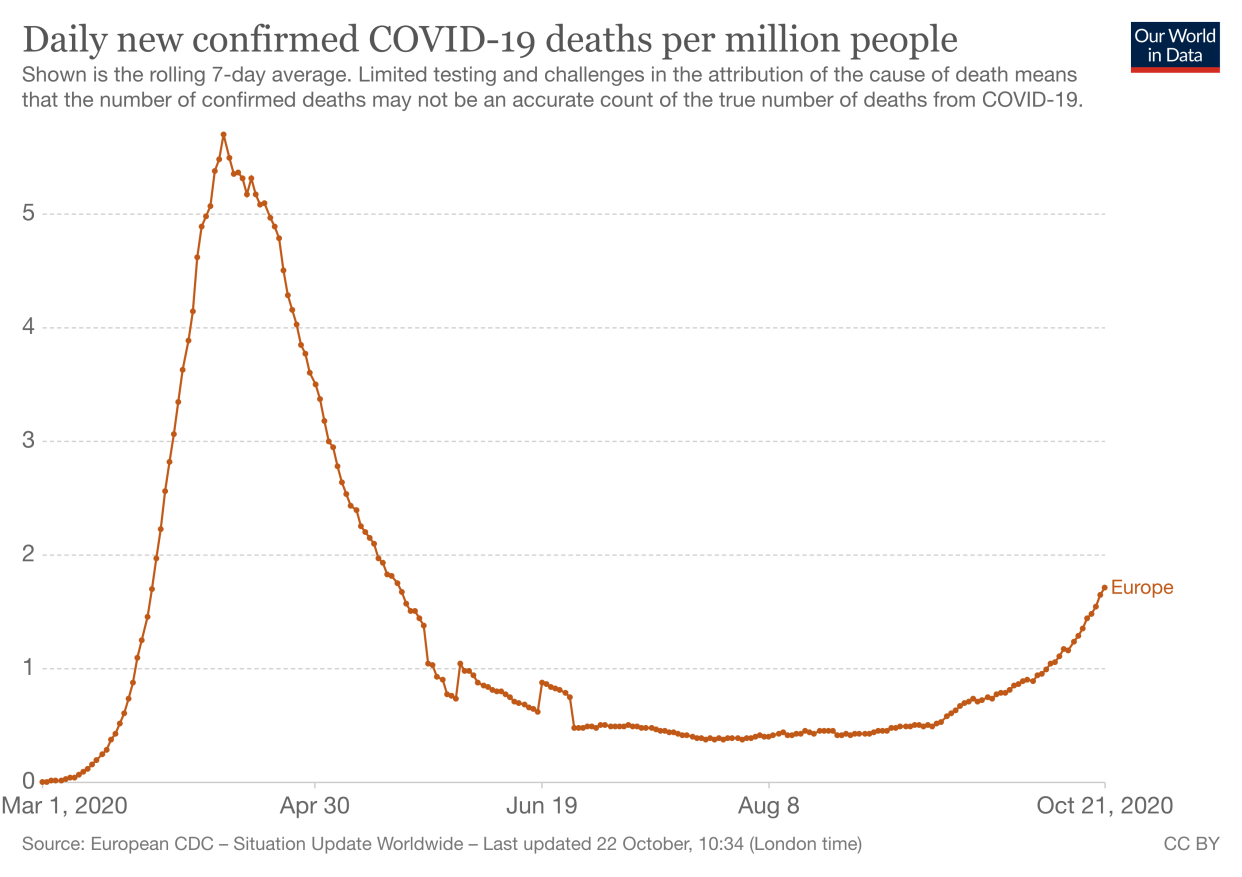The day COVID spread in Europe – 'The situation has become very serious'

Was this the day COVID-19 spread across a continent and reinforced that the difficult winter predicted by many could soon become a reality?
On Wednesday, at least 22 European countries recorded their highest ever number of daily infections.
At the top of that list was the UK, which recorded 26,688 cases – though far more coronavirus tests are now being conducted than during the first wave of the pandemic, during which it is thought there were 100,000 infections a day at one point.
Watch: What you can and can't do during England's third national lockdown
Spain also had a record daily figure – 16,973 – as it became the first European country to pass a symbolic threshold of one million cases since the start of the global pandemic.
The country’s health minister, Salvador Illa, had warned on Tuesday: “Some very hard weeks are coming.”
That point could also be applicable to Europe as a whole, and is demonstrated by new charts (below) from the European Centre for Disease Prevention and Control. They demonstrate how quickly the virus is starting to spread now compared to the summer.


Italy, which like the UK and Spain was badly affected in the first wave, saw 15,199 new infections on Wednesday, well up from its previous record of 11,705.
Even Germany – a country hailed for its restriction of the spread of the virus in the first wave – is starting to see an acceleration in cases. Some 10,457 infections were recorded on Wednesday: another record.
Lothar Weiler, head of the country’s Robert Koch Institute, admitted on Thursday: “The situation has become very serious.
“The number of infections is rising rapidly in many areas and we don't know how the virus situation will develop.
“But we are still able to slow the further spread of the virus and everyone can make a contribution.”
Latvia, at the bottom of the list, announced its own record number of 188, demonstrating how the virus is also starting to spread in countries which have previously been relatively unscathed.
Read more: How fast is COVID-19 spreading in your area? England coronavirus infection rates listed
An increasing number of countries have reimposed restrictions on people’s freedom, with Ireland becoming the first in Europe to return to a full lockdown on Wednesday.
It comes a week after Dr Hans Kluge, the World Health Organization’s (WHO) regional director for Europe, warned of “exponential increases” of infections across the continent.
While deaths are still relatively low compared to the first wave, he added there is “realistic potential [for this] to worsen drastically if the disease spreads back into older age cohorts”.

That would appear to be reflected in the chart (above), which shows a slow uptick in COVID deaths in recent days.
He concluded with a warning, however, about the value of national lockdowns: “Our message is that any nationwide tightening-up decision must consider both the direct risks and the collateral damage associated with the pandemic.”
Watch: Can you catch the coronavirus twice?
Coronavirus: what happened today
Click here to sign up to the latest news and information with our daily Catch-up newsletter



